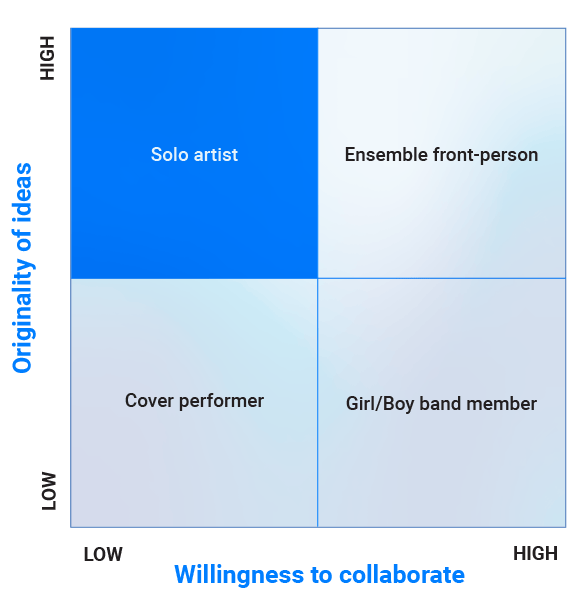Strategy
Content Creation 101: Tips for Working With Reluctant Subject Matter Experts
Matching subject matter experts with ghostwriters is supposed to be the golden ticket to content success. Sometimes, simply turning on the recorder (with permission) while they’re speaking in a meeting can reveal a host of exciting content topics. The challenge, however, is that many SMEs have day jobs that don’t involve content creation. They may run your product management or sales teams, or they may even be your CEO. They’re busy — and content isn’t on their list of KPIs.
Bandwidth constraints aren’t the only challenge you may face when working with SMEs. Sometimes the SME recognizes the value of content but doesn’t want to work with you on it. But since that’s your job, dear content person, we’ve crafted some tips to help you succeed at getting great content from SMEs. As a start, we’ve defined four SME archetypes along with effective strategies for working with each of them them.
4 SME “Types” You May Encounter While Creating Content
SMEs fall roughly into one of four general “types” based on where they fall in relation to two dimensions: the originality of their ideas and their willingness to collaborate.
Note that the first dimension is originality, not authority or credibility. By definition, an SME has expertise in the form of knowledge, experience, or a set of skills.
The dimension here isn’t whether they are an expert or not (we are assuming they are), but whether that expertise manifests in the ability to come up with new, fresh ideas you can translate into content.
To illustrate, we’ve used the music industry and the different types of performing artists as a metaphor for the different kinds of SMEs.
Along the dimension of originality of ideas (the vertical axis), you have the cover performer in the low originality-to-low-collaboration quadrant, and the solo artist in the high originality-to-low collaboration quadrant.
Both are experts in music. But that expertise manifests for the cover performer in a near-encyclopedic knowledge of the existing songbook; while for the solo artist, it manifests in the form of new, original songs.
Shift to the right, and the low-originality-to-high-collaboration musician is a band member, while their high originality-to-high-collaboration counterpart is a front person for an ensemble (see below).

It isn’t necessarily better for you to work on content from SMEs in one quadrant over another. Any of the archetypes can contribute something useful.
Your strategy for extracting that something, however, changes depending on what you’re dealing with in any given situation.
Step number one? Ask them: How do you want to work together? Beyond that, consider the following four approaches.
Working With the Cover Performer
The cover performer has extensive expertise about your organization, its product(s), or the industries in which you operate. That expertise is static, however.
Ask them to opine on the future of the organization or the sector, and the cover performer is going to answer with, “Just the facts, ma’am.”
The cover performer also likes to take the stage alone — just them, a microphone and a guitar, and that ballad everyone knows (and often likes hearing). We summarize their strengths and challenges as follows:
Strengths
- Deep knowledge of the organization’s past and present
- Contextualizing current challenges in light of the organization’s historical context
Challenges
- Making predictions or expressing opinions about the future
- Asking for or taking advice

The cover performer will never be your go-to source for new or original content. They are essential, however, in contexts that require gravitas or institutional solidity.
Strategies for Working With the Cover Performer
- Can you leverage them in contexts that require a tone of reliability, trustworthiness, or extensive knowledge, such as product content, onboarding new employees, and investor relations?
The cover performer’s extensive knowledge about your product, organization, or industry is essential for helping new employees, customers, partners, or investors get up to speed on everything they want and need to know.
Just make sure you set them up to add value in the format that best suits them. Live or pre-recorded presentations are an option here.
- Can you leverage your cover performer’s historic relationships?
Cover performers may have a back-catalog of relationships in the organization or industry as well, making them the right interviewer for a video case study with a long-time customer or an iconic industry leader.
Working With the Solo Artist
The solo artist SME archetype has plenty of original ideas but prefers to develop and share them without input or help from others. Their resistance to content collaboration can show up as an unwillingness to contribute to a content effort at all or contributing on the condition that there are no edits or comments. We summarize their strengths and challenges as follows:
Strengths
- High volume of ideas
- High-quality ideas
Challenges
- Communicating ideas in ways that reach audiences at scale
- Communicating ideas using language/formats that engage audiences
- Contradictions with other messages from the organization

At face value, solo artists are the most challenging archetype to work with. They are unquestionably knowledgeable and authoritative — and are often heralded for that knowledge.
Their lack of willingness to collaborate can feel disrespectful to your expertise (in communications). It can also result in contradictory messages appearing in the market because they aren’t collaborating on position alignment. That can sometimes blow back to you.
So, for all of you out there dealing with a solo artist, we feel you, but… get over it. They have ideas. You need ideas. And they can’t help the way they are. Solo artists are often non-collaborative because of personality (they’re introverts), training (they came up in individualistic environments), or fear (they’ve had collaborators steal their ideas or misrepresent them in the past).
In other words, it’s not about you. The key with them is to harness the plethora of ideas they have in any way they will let you.
Strategies for Working With the Solo Artist
- Does your solo artist like to present but not write?
Film them presenting and repackage the content in smaller snippets they can use as social posts on their feed. Or publish part of the cleaned-up transcript of their presentation as a blog post with their byline (if they say it’s okay).
- Does the solo artist write in non-content-friendly formats (like through emails or over Slack)?
Capture their writings and repurpose them word-for-word (if feasible) in content assets such as “Ask an Expert” articles, FAQs, quotes, and social posts.
You need to build up trust with a solo artist — so stay close to their original work with any outputs you create and always, always give them credit.
You also may want to explore whether they have a proxy you can work with — for example, a more junior employee on their team who they already trust and who you can more easily engage with. Mediating the relationship is easier and can get you further than dealing with them directly.
Working With the Band Member
The band member is highly collaborative. They participate in brainstorms and may have a lot to say, yet the ideas they get behind may not be particularly fresh or original.
Fortunately, because of their highly honed collaborative skills, they will ask for and take advice. Their strengths and challenges are as follows:
Strengths
- Highly honed collaborative skills
- Willingness to seek and take advice and tap into others’ expertise
Challenges
- Contributing a new or unexpected perspective
- May not thrive in live or interactive contexts that require improvisation

The band member can be easy and pleasant to work with. You may walk away from a brainstorming session feeling like you had a productive conversation, only to find when you sit down to write that you don’t have much to say that hasn’t been said in other ways by other people.
This is where you and your editorial expertise come in.
Strategies for Working With the Band Member
- Can you apply the non-original ideas to a new context?
Leverage current events or moments in the news cycle to apply your boy/girl/non-binary band member’s ideas — the fresh context can liven up the ideas.
If your organization serves different industries, leverage the ideas for content geared to distinct markets. Similarly, develop content assets that speak to common issues faced by leaders in adjacent functions from your typical buyer.
- Can you leverage your band-member SME as a moderator for a podcast or webinar event featuring more iconoclastic guests?
Help your SME display their talent as an expert collaborator by having them engage other experts in a public forum in real life or through digital channels. Doing so allows them to excel in their comfort zone while drawing out the unique insights of their guests.
Working With the Ensemble Front-Person
The front person is both highly creative with their ideas and highly collaborative about evolving and communicating them. They have a lot to say, and they accept input from others. They are willing to delegate creative tasks, too.
Their strengths and challenges are as follows:
Strengths
- High output of original ideas
- Highly honed collaborative skills
Challenges
- Prioritizing which ideas and channels to explore
- Focusing long enough on one idea to finish an output

The front person seems like the easiest expert archetype to work with — and the best for producing great content. But they also bring a set of challenges.
In particular, they’re often more interested in ideation than in execution. Good luck getting them to concentrate on one idea long enough for you to create a content output.
That combination of prolific imagination coupled with prolific collaboration has them constantly rethinking an idea, asking for opinions from others, and suggesting something “better.”
By the time you circle back with a draft or explore an idea more fully, the front person is on to something else.
Strategies for Working With the Front-person
Focus on speed and volume over perfection when working with a front person.
- Can you capture their ideas and turn them into content quickly?
Prioritize outputs with a short turn-around time. Examples include social posts, Q&A blog posts, social videos based on a recorded conversation, and so on. Deprioritize anything that requires more than a week to move from ideation to first review.
- Can you leverage your front person for live or interactive events?
Front people are very good in live interactions requiring a combination of practiced responses and off-the-cuff engagement with unanticipated questions. Think live panels in which they are a discussant or press interviews.
From Expertise to Expert Content
These approaches can help you get the best content out of the different SMEs you have to work with. A word of warning, however. Customizing your approach for each SME you work with is key. It is not a cure-all, though. If you’re dealing with a person who won’t engage with you and doesn’t produce content you can leverage, you are better off shifting investment to another SME or content type.
Learn more about content strategy every week. Subscribe to The Content Strategist newsletter for more articles like this sent directly to your inbox.
Image by ojogabonitooGet better at your job right now.
Read our monthly newsletter to master content marketing. It’s made for marketers, creators, and everyone in between.




